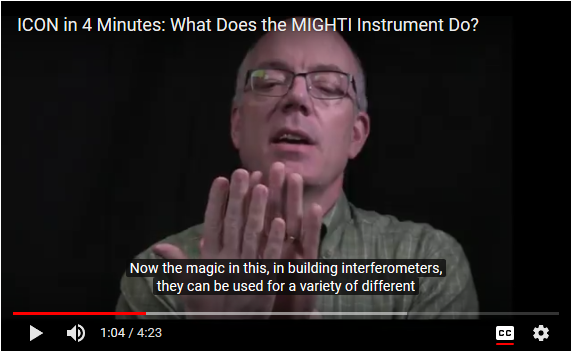 ICON carries four different instruments to explore Earth's upper atmosphere. The MIGHTI instrument, an example of an interferometer, looks at winds and temperatures in the ionosphere. In this video, Drs. John Harlander and Chris Englert explain what an interferometer is and what MIGHTI will be investigating.
ICON carries four different instruments to explore Earth's upper atmosphere. The MIGHTI instrument, an example of an interferometer, looks at winds and temperatures in the ionosphere. In this video, Drs. John Harlander and Chris Englert explain what an interferometer is and what MIGHTI will be investigating.
"The atmosphere naturally just glows at those altitudes, more during the day and less during the night...and by just looking at the color of this airglow, we can find out about the wind and the temperature. So the atmosphere... is helping us to understand how it is behaving by sending out this airglow. If we build the right instruments to look at particular aspects of the color of the airglow, we can get information that we want."
— Dr. Chris Englert, MIGHTI instrument lead